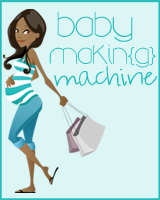Babies loose a few ounces of weight after birth. They are born with extra fluid which they loose, usually in the first few days following birth; however, they regain this weight in the following weeks and usually reach or pass their original birth weight.
The first bowel movement baby has after birth is called meconium and it consists of cellular material and other substances from his digestive tract that he accumulated while in utero. He must pass this before normal digestion can begin.
Baby's senses were fine tuned before birth, and after birth they quickly develop.
- Baby's taste is developed for the desire of sweet things (breast milk or formula.) Bitter, salty and sour tastes develop later.
- Baby can hear low frequency sounds at birth best and this includes the human voice. The range that we as adults hear will come later as their hearing matures.
- Vision is also not fully developed. Baby's brain is still developing so they do not see the world as adults do. Acuity continues to develop over the coming months.
- Baby's sense of smell is well developed at birth. Research has found that a baby who is breastfeeding will be able to find its mother's nipple via sense of smell mere hours after birth.
- Baby's sense of touch is well developed.
Babies will exhibit reflexes, most of which they outgrow by 3-6 months of age:
- Rooting reflex: opening of mouth accompanied by sucking motion
- Sucking reflex: vigorous sucking when something is placed in the mouth
- Moro reflex: the sudden extension and then retraction of limbs and extremities
- Grasping reflex: open hand balls to fist when fingers or palm are touched
- Startle reflex: elicited by loud noise, look of fright and/or flex of limbs
- Tonic neck reflex: extension of arm and leg outward while lying on back when head is turned to one side (helps baby maneuver through birth canal)
- Stepping reflex: placing one foot in front of the other when held upright
- Crawling reflex: mimics the motions of crawling when placed on stomach
- Swimming reflex: holds breath and moves as if swimming when placed underwater
- Nasopalpebral reflex: closes eyes when bridge of nose is tapped
- Parachute reflex: attempt to grasp overhead if they feel they are falling
- Babinski reflex: big toe bends back toward top of foot and toes fan out when sole of foot is stroked
- Galant reflex: trunk and hips move to one side or the other in concert with the the side of the spine that was touch while baby is suspended stomach with stomach facing down in one hand






































No comments:
Post a Comment
Leave a comment!